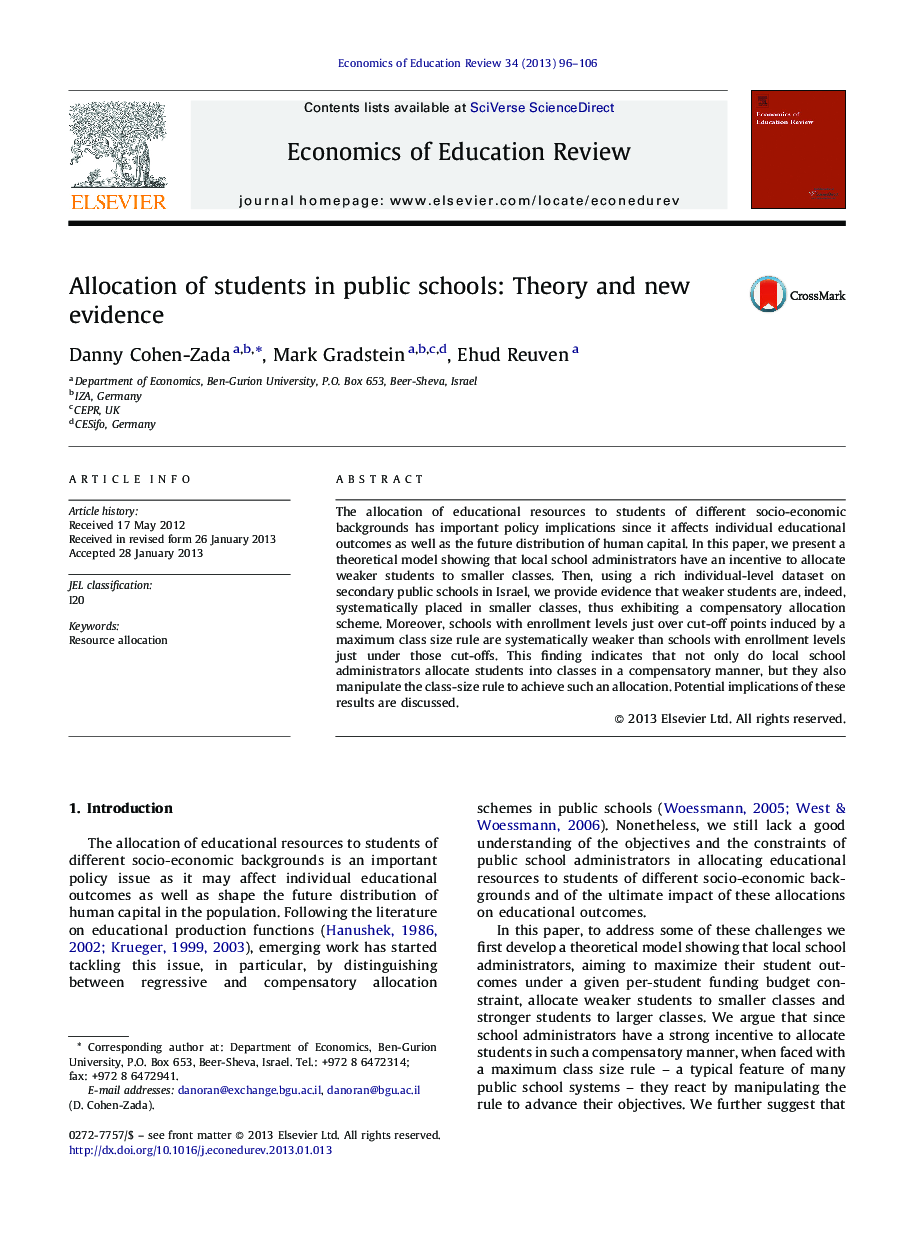| Article ID | Journal | Published Year | Pages | File Type |
|---|---|---|---|---|
| 354482 | Economics of Education Review | 2013 | 11 Pages |
The allocation of educational resources to students of different socio-economic backgrounds has important policy implications since it affects individual educational outcomes as well as the future distribution of human capital. In this paper, we present a theoretical model showing that local school administrators have an incentive to allocate weaker students to smaller classes. Then, using a rich individual-level dataset on secondary public schools in Israel, we provide evidence that weaker students are, indeed, systematically placed in smaller classes, thus exhibiting a compensatory allocation scheme. Moreover, schools with enrollment levels just over cut-off points induced by a maximum class size rule are systematically weaker than schools with enrollment levels just under those cut-offs. This finding indicates that not only do local school administrators allocate students into classes in a compensatory manner, but they also manipulate the class-size rule to achieve such an allocation. Potential implications of these results are discussed.
► We present a model showing that local school administrators choose to allocate weaker students to smaller classes. ► A rich individual-level dataset on secondary public schools in Israel is used to test this implication. ► Regression discontinuity analysis indicates that socio-economically weaker students are placed in smaller classes. ► This finding implies a compensatory allocation scheme.
